한식 읽기 좋은 날
Vol 50. Korean Food, The Culture Blooms
Gui Culture of Korean Traditional Food Inherited with Garigui
Korean Food and Grand Master
When there is a happy occasion at home, galbi(grilled ribs) is always present on the table.
Sogalbigui(grilled beef ribs), in particular, has been highly prized even in the Korean table setting that put importance on formality. This is because the grilled beef ribs dish has a flavor that is loved widely with its soft and savory texture and the seasoning marinated into the juice. If so, what type of grilled beef ribs dish is continuing the tradition of the Korean gui(grilled dish) culture? Grand Master Kim Oesoon(Korea Food Grand Master No. 89) was designated as the first grand master in the category of gari(sogalbi: grilled beef ribs) at the end of last year, and she presented a clear answer to this question. We met with Grand Master Kim, who has the ability to restore garigui(grilled beef ribs) based on ancient literatures with her mother’s garigui cooking method, and discovered her unique secrets.
Article. Min Gyeongmi Photo. Kim Jay
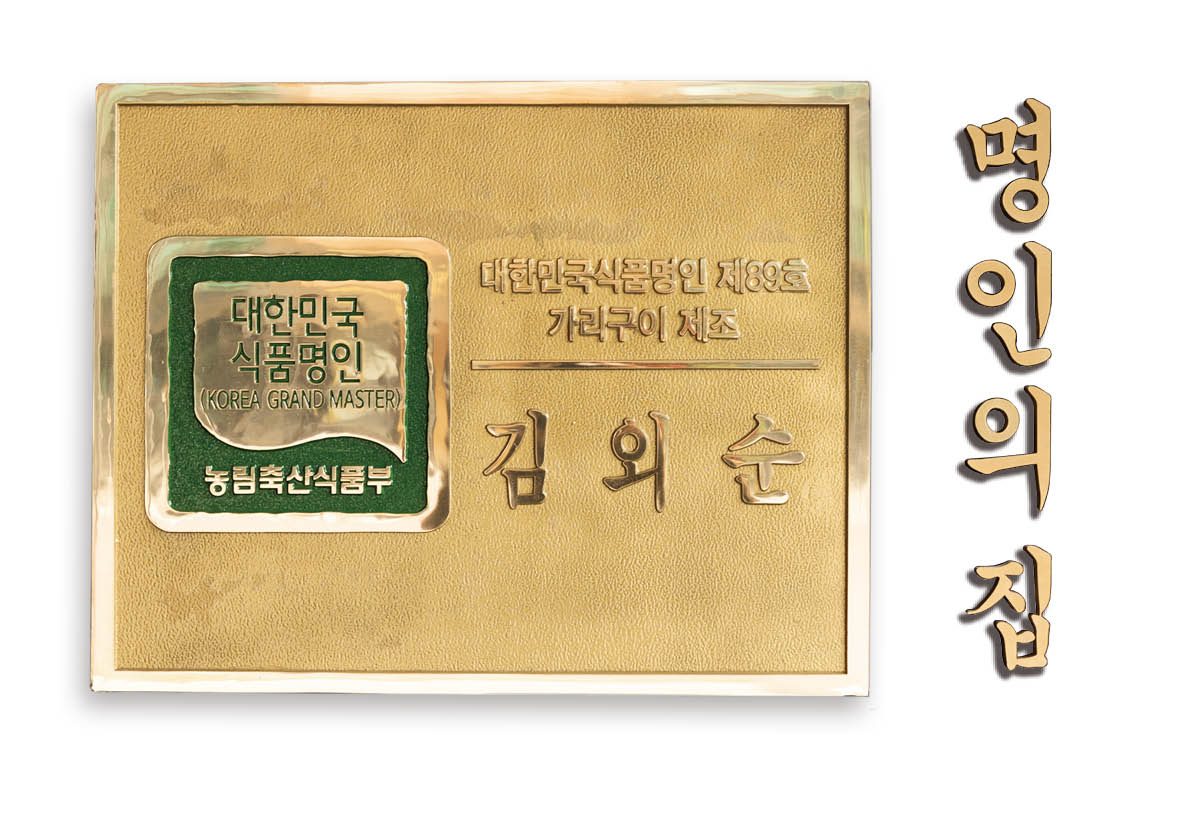
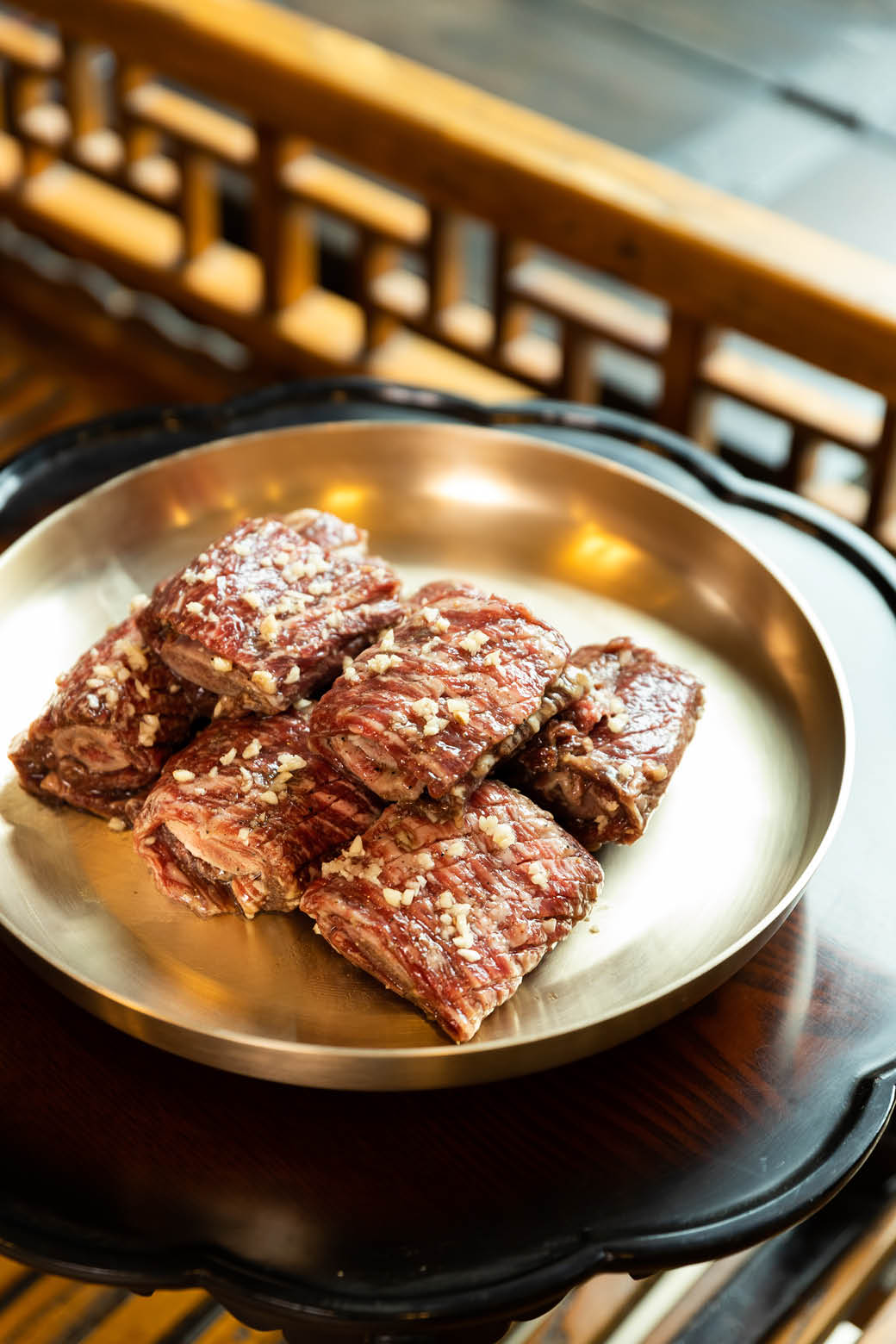
Q. The word “gari” in garigui is unfamiliar. What does it mean? We are also curious about how our ancestors enjoyed garigui.
“Gari” is an old word for galbi(ribs), and garigui means grilled ribs, especially grilled beef ribs. The records of garigui are preserved in ancient documents, such as <Imwonsipyukji(1835)> and <Siuijeonseo(the late 1800s)>. According to old references, it is said that in the Joseon Dynasty, the aristocrat households made thin slices of ribs, sat around a brazier and grilled them over open fire. It is assumed that it started from here, and changed to ribs grilled over charcoal.
Q. Last year, you were designated as Korea Food Grand Master No. 89. If what you said above tells us about the traditional characteristics of garigui, your personal history of learning garigui would have been a material proof of its legitimacy. Please tell us about your family's history in relation to garigui.
I was born and raised in Angye-myeon, Uiseong-gun, Gyeongbuk, and there was a large cattle market nearby. It was established during the Japanese colonial period, so it has quite a long history. Since it was nearby, we were able to buy beef cheaper than other places, and there was a culture of slaughtering a cow in a village and sharing it with the villagers from time to time, so we relatively ate beef more frequently.
I vividly remember the taste, thanks to my mother who was famous for her food skills in the neighborhood. For example, there was no refrigerator at that time, so there was no way to store meat, but my mother would wrap the meat in changhoji(traditional Korean paper made from mulberry bark for doors and windows) or hemp cloth, bury it in a salt jar, and take it out whenever she used it. When seasoning and grilling meat, she added her own original ingredient to add flavor and pharmacological effects. It is cheoncho(madder; known as zepi(Korean pepper) or sancho(Chinese pepper)), which is the core of the recipe for garigui that I restored. She used her own wisdom in food before spices, including pepper, which is used to season meat, were widely available.
Cheoncho, which was directly harvested from nearby hills, was widely used in my mother’s cooking as well as meat seasoning. In the past, there was no fertilizer, so human excrement was used as manure for cabbages and radishes grown in the fields. Other houses couldn’t eat the crops raw because of the toxin until frost, but it was different in my house. Thanks to my mother, who knew well that adding cheoncho removes toxins, we were able to eat cabbages and radishes raw. And, naturally, none of my family had ever experienced stomachache.
Everyone in the village knew my mother, who had the skills and the wisdom, and she was always present at local events. Even when I was preparing materials for authenticity for the grand master application, the current director of the Uiseong Cultural Center, who grew up in the same village with me and knew everything about her, willingly became a witness.
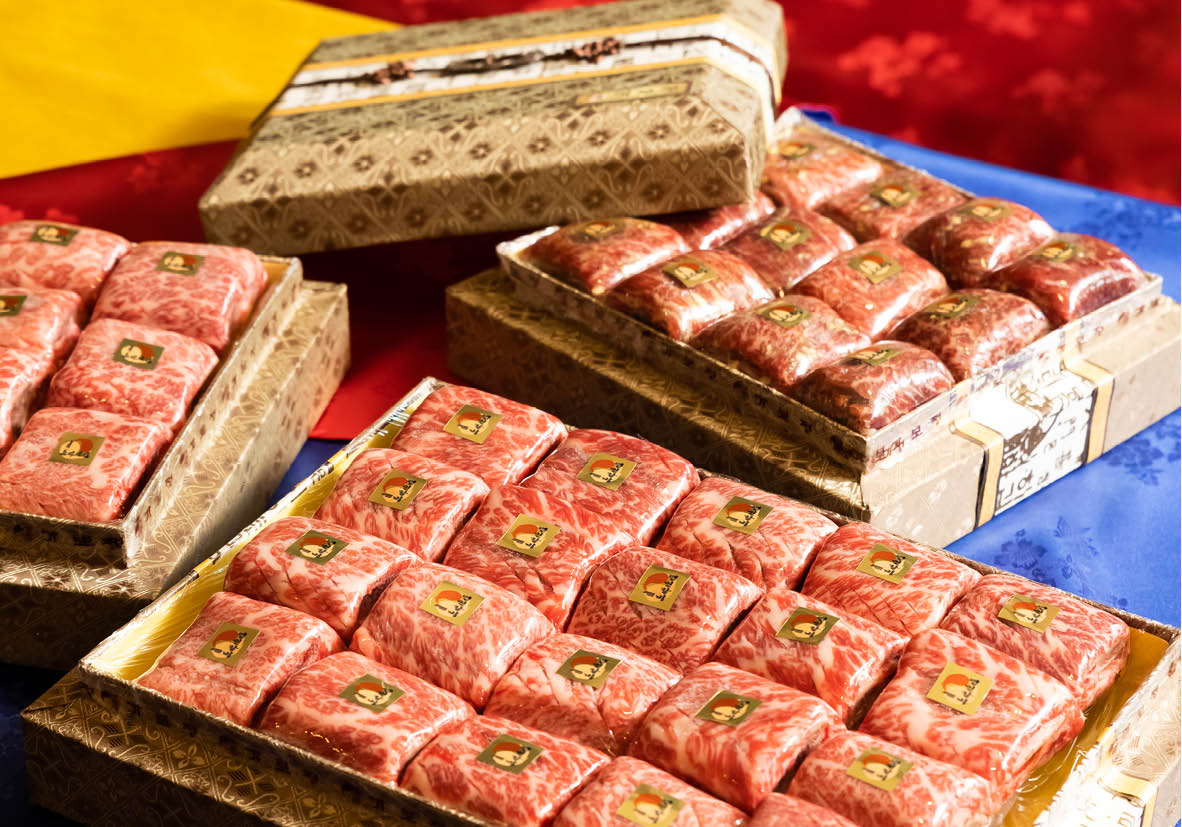
Q. Was there an occasion to publicize your mother's recipe for garigui in the present progressive tense rather than just remembering it as a taste based on your memory?
It was when my husband's business failed after we got married that I decided to pass down the secret recipe of my mother’s garigui, which she learned from her mother. I was responsible for our livelihood by running a street stall selling tteokbokki(stir-fried rice cake) and twigim(deep-fried vegetables and fish) at a traditional market, and perhaps because it was so hard, I often thought of the taste of garigui that my mother made for me. Then, I thought of preserving my mother’s own garigui recipe that I had never tasted anywhere else, and I’ve been doing it for 30 years since. Fortunately, my son, who studied hotel management, is my successor, and he has been learning and mastering the garigui recipe.
Q. Grilled beef ribs are a type of food that can be easily eaten at home or at nearby restaurants. What is the difference between the grilled beef ribs that we are familiar with, and your garigui?
As I explained earlier, the garigui that I restored is based on a recipe my mother used in the past. It follows the traditional method of seasoning, aging, and grilling beef ribs, but it is clearly distinguished from other grilled beef ribs dishes because it removes meat smell and adds nutrients by using cheoncho and garlic. This recipe is the only one that uses cheoncho for seasoning beef ribs, and since cheoncho’s natural flavor is very strong, it is important to adjust the proportion when using it as a seasoning as not to spoil the taste of the original ingredients.
Furthermore, the meat is not marinated in soy sauce with various seasonings, but seasoned by mixing cheoncho-based ingredients in powder form and salt, and sprinkling it over meat. Also, fresh pear and pineapple juice are used to tenderize the meat and to help in digestion and absorption. I can say that the best ingredients for taste, nutrition, and texture are harmonized to make the current garigui..

Q. Cheoncho is an essential spice and the most important seasoning in your garigui recipe. What are the benefits of cheoncho, which is rather unfamiliar to young people?
Cheoncho, the fruit of the chopi(Korean pepper) tree, is described in detail in <Donguibogam>.
Since the ancient times, cheoncho has been widely used as a medicinal herb because of its excellent pharmacological action before it was used to season food. Its main efficacies are to warm our body to support immunity, to detoxify accumulated toxins in the body, and to relieve pain. It is also used as a seasoning for garigui for this reason. It removes meat smell with its unique scent, warms our insides, promotes digestion, and prevents acidification. Though I’ve been making garigui for over 30 years, I think, thanks to this cheoncho, no one in my family or friends experienced food poisoning or stomachache after eating my food.
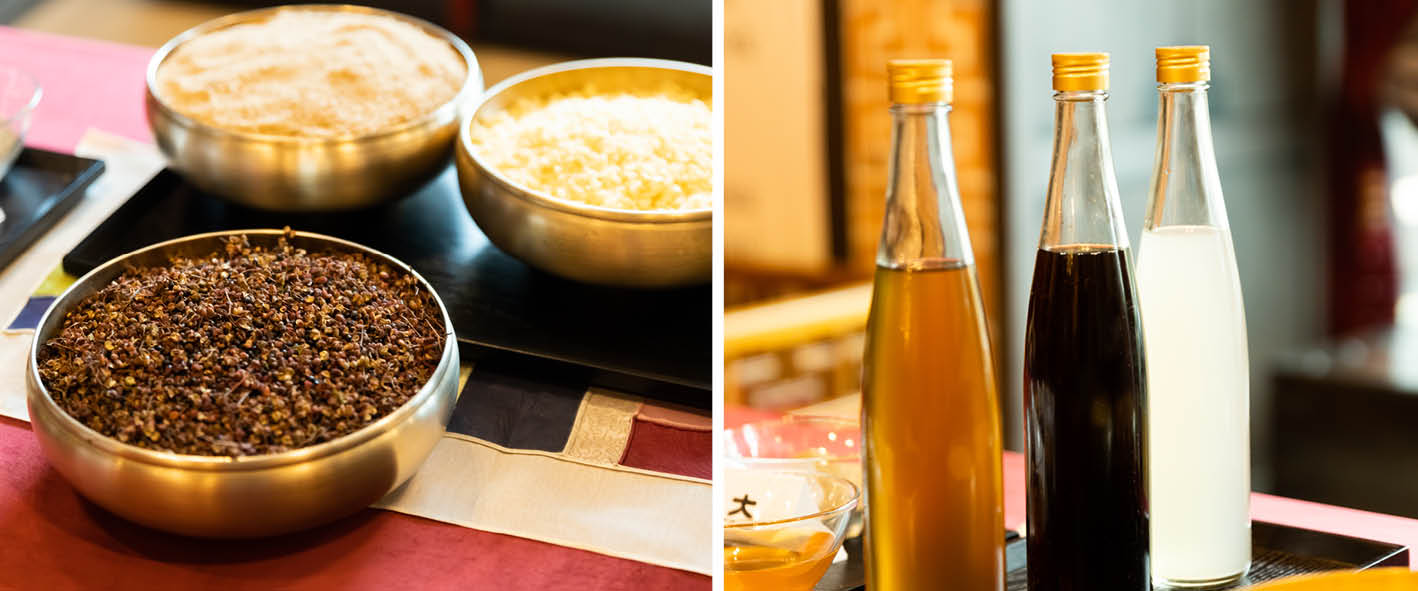
Q. As the first grand master in the traditional garigui category, please tell us about your plans or wishes for the future.
I applied to become a grand master because I wanted to pass down the traditional taste of garigui to the next generations for a long time, and I think I was designated as the grand master in the sense of acknowledging my determination and effort. Therefore, I will always try not to lose my initial mindset, so that I can put these meanings into practice properly in the future. That is, first of all, I will do my best to properly inherit and promote garigui so that it can be maintained as a traditional dish for a long time.
Moreover, as I became a grand master, I would like to contribute to promoting our proud Korean cuisine to the world. Recently, I heard about a Korean-style, charcoal-grilled restaurant in New York that was so popular that they had to wait in line for an hour, and this news made my heart flutter though I am in my 70s. To hear that our traditional food is receiving good reviews from overseas rather than domestically made me feel proud and open to possibilities. This is the reason that led me to a new goal of “informing the world of garigui” as a grand master. As I am just starting, even if I cannot achieve it, the next generation will definitely try to fulfill my responsibility and mission as a grand master by providing a foothold so that the world can discover the taste of our traditional garigui.
Q. You are already well-recognized in the field of grilled ribs. Apart from that, what motivated you to apply for the grand master title?
Despite the fact that meat-based dishes are always present in our traditional Korean table setting with formality, the grand master titles were primarily focused on kimchi, jang(sauces), and tteok(rice cake). Recently, a grand master in the garijeok(tteokgalbi: grilled short rib patties) category was designated, but there was no grand master of garigui. As the gui(grilling) culture is supporting one of the pillars of Korean traditional food, I desperately wanted to be recognized for the gui culture by becoming a grand master in the garigui category.
Moreover, my desire to teach the secret of garigui, which I have learned from my mother, who learned from her mother, not only to the next generation but also to future generations, is one of the reasons that prompted me to take on the challenge of becoming a grand master. As the purpose of a Korean food grand master is to produce and inherit successors in a field, I thought it was necessary to add a sense of justification and calling. Thus, I took courage in the thought that there is no challenge as meaningful as a becoming a grand master.
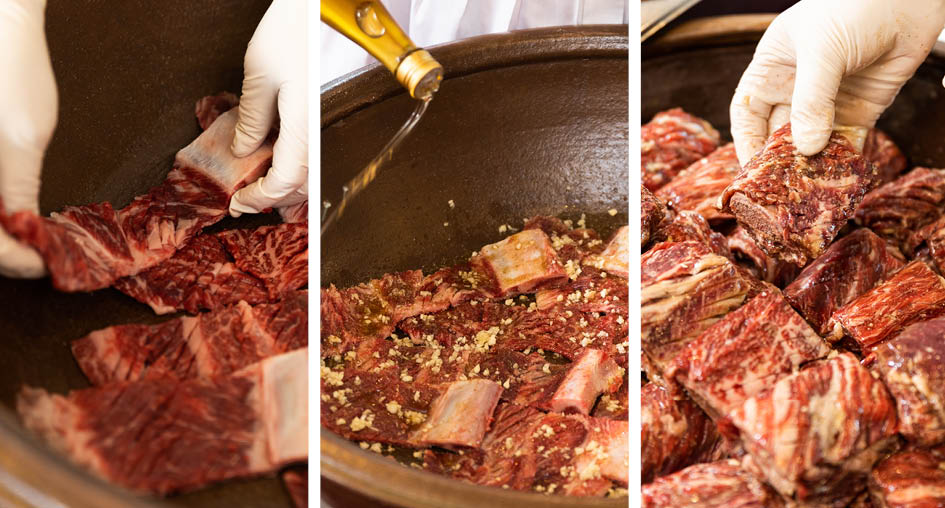
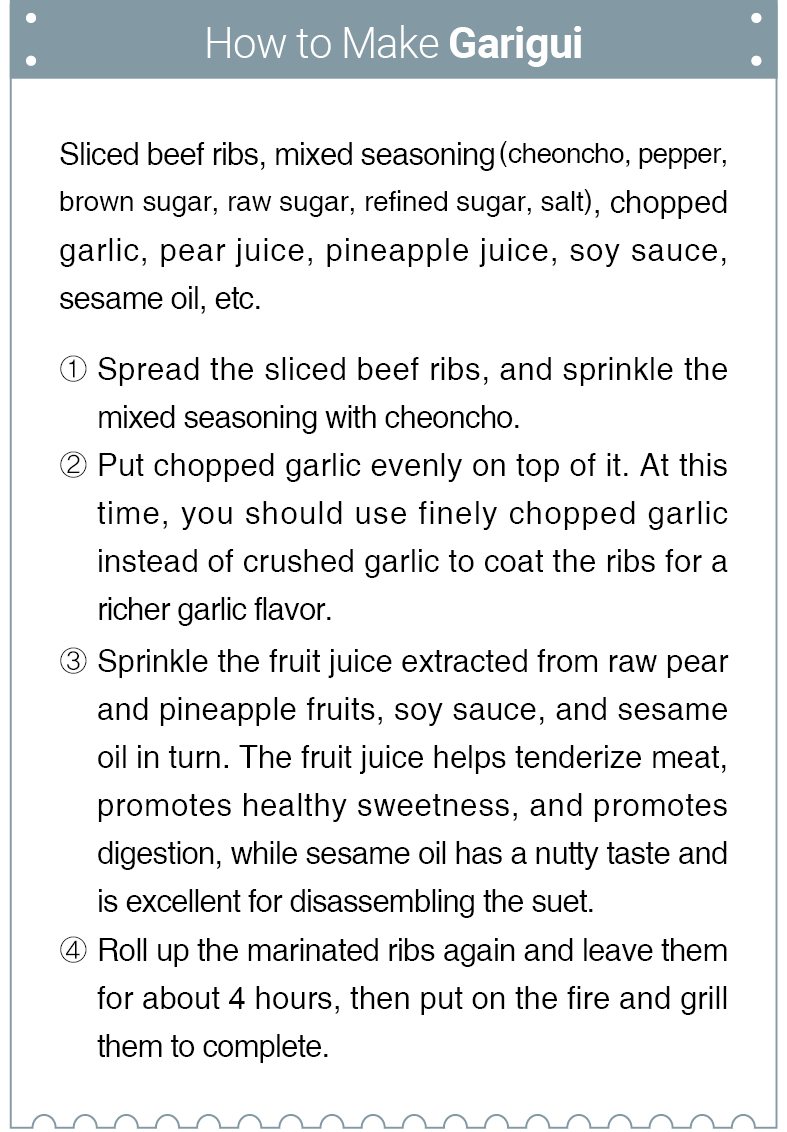

 한국어
한국어
 English
English






